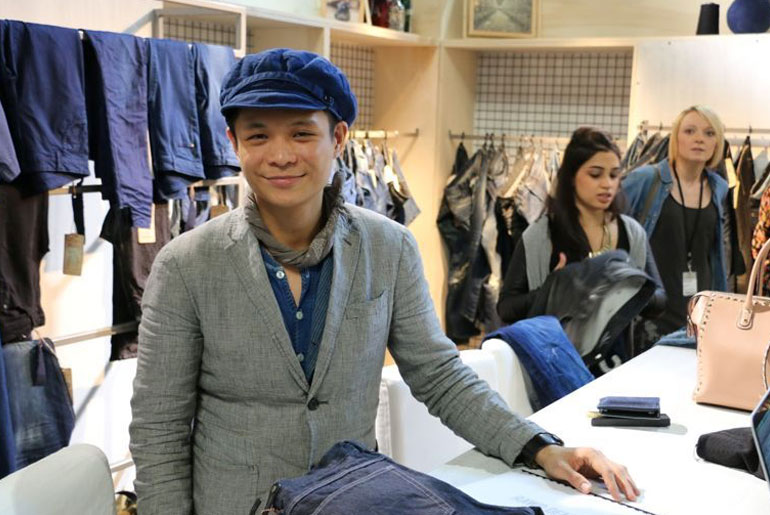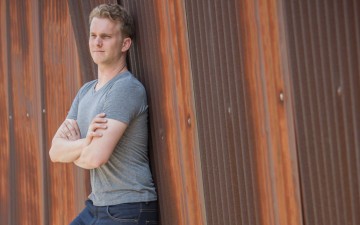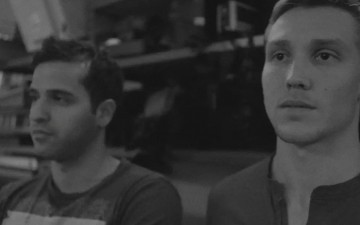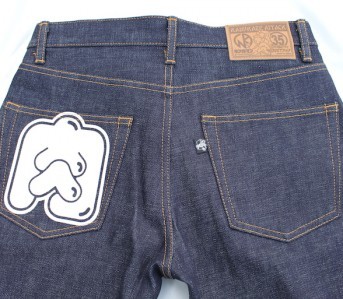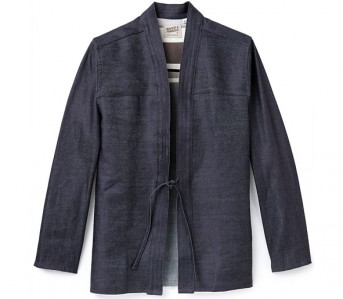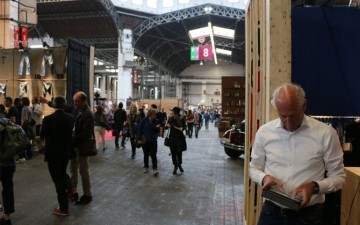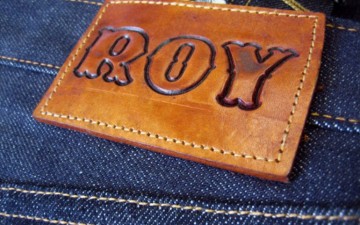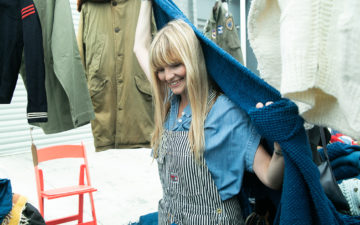For most denim enthusiasts, their appreciation for high-quality jeans is directly tied to a rediscovery of decades-old methods of production–ranging from the dyeing and weaving of selvedge denim, to the vintage machinery often used to sew their jeans.
And while there’s been plenty of innovation – particularly from Japanese brands like The Strike Gold, Pure Blue Japan, and Samurai Jeans, which have pushed the limits of weaving and dyeing techniques to create unique, textured fabrics – it’s clear that a lot of what makes for a fine pair of jeans was developed in previous eras.
But for Henry Wong, a long-time denim enthusiast and former product development manager at Cone Mills, that wasn’t enough. Since joining Pakistan’s Artistic Fabric Mills, Henry has been working on reviving ancient Indus Valley dyeing techniques to create a new method of denim dyeing – which the company is calling Ajrak Technology.
We sat down with Henry to learn more about this newly-revived method of dyeing and what it has to offer to denim enthusiasts.
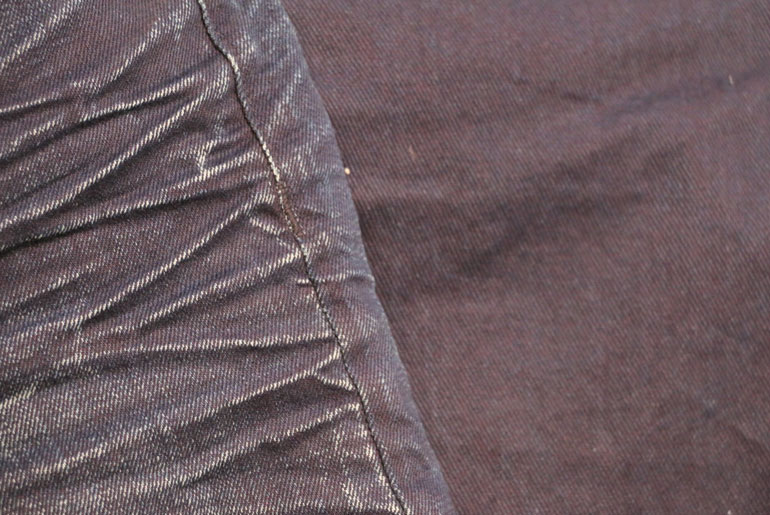
A distressed and raw sample of Artistic Fabric Mills Ajrak Technology denim.
Heddels (Kyle Robinson): Thanks for taking some time to answer our questions, Henry. First, can you give us some background on yourself and what your work at Cone Mills involved and how did that lead you to working for a fabric mill in Pakistan?
Henry Wong: I started my career breaking down a pair of jeans to figure out all the costs associated with producing it. It is still amazing to me how wide and deep the supply chain required to support making a pair of jeans is.
It covers farmers, fiber producers, yarn and fabric mills, chemical and dye suppliers, paper suppliers, metal trims suppliers, testing laboratories, sewing factories, laundries, leather suppliers, and so many more. Somewhere along the way I became obsessed with denim and when the opportunity came along to work for Cone Denim it was a dream come true.
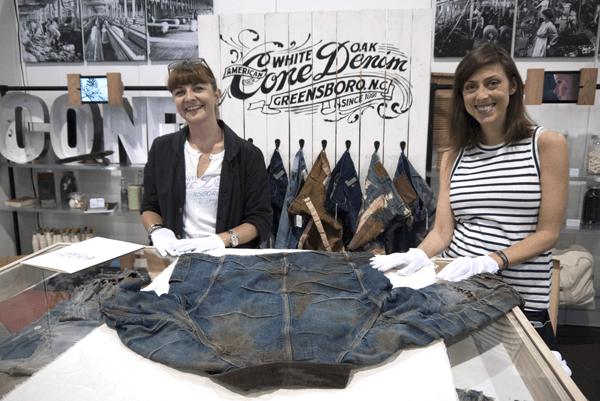
Cone Mills displaying pieces from their Found Collection
Indigo, with its history in so many civilizations, is one of those wonderful things that can bring you to interesting places. When I fell in love with indigo and traveled in search of it I followed a tradition that brought many to places like India, remote Vietnam, northern China, Oman, West Africa, etc.
Artistic Fabric Mills gave me the opportunity to work in a phenomenal denim mill and also see a now obscure indigo tradition that actually forms a large part of indigo’s history. From visiting archeological excavation sites to further studying with hand dyers there is a lot more work to be done in Pakistan.
RD: We’ve written about conventional techniques of indigo dyeing before, like rope dyeing and hank dyeing. What does the piece-dyeing of Artistic Mills’ new Ajrak Technology involve?
HW: Simply put, Ajrak Technology is making an undyed denim and then putting it into indigo. This sounds very easy but for Ajrak Technology, Artistic Fabric Mills had to develop new techniques that allow machinery found in a denim mill to do indigo piece dyeing with quality.
Controlling quality and consistency was probably the most difficult challenge we had to overcome. Anyone can dye a length of fabric in indigo but it took quite a feat of skillful engineering to bring it to a satisfactory point we felt comfortable introducing to the market. Indigo piece dyeing—that is dyeing entire lengths of fabric—has quite a bit of historical precedence through the world. In our area of Pakistan—known as Sindh—you can find some of the most important archeological sites of the Indus Valley Civilization. It was here that sand pits used to insulate indigo extraction vats were uncovered.
It is here today a handful of indigo hand dyers, who in the seventeenth century were the most sought-after, are struggling to remain relevant in a world where their time-consuming craft finds little appreciation.

In collaborating with these artisans in various projects we were blown away by their skill and the beauty of their work. The primarily indigo product they produce is something called ajrak, which requires up to 22 steps of which indigo is required in at least two steps. When we dug deeper into the history we knew we had to find a way for the denims we produce to reflect this inspiration and facilitate some conversation about indigo in the area lest it fade into obscurity.
RD: Denim fans are always on the lookout for fabrics that will fade in new and interesting ways. What can of fading potential can we expect from the new Ajrak denim?
HW: Let’s just say that within a week a wear pattern started developing on my jeans made with the first run of Ajrak Technology fabric. But it is not that the faded area turned white right away. It is only fading in the sense that the deep, rich, purple hue of indigo is giving way to a calmer navy.
We are still exploring various forms of expression for Ajrak Technology fabrics and only time will tell how they will fade with use.
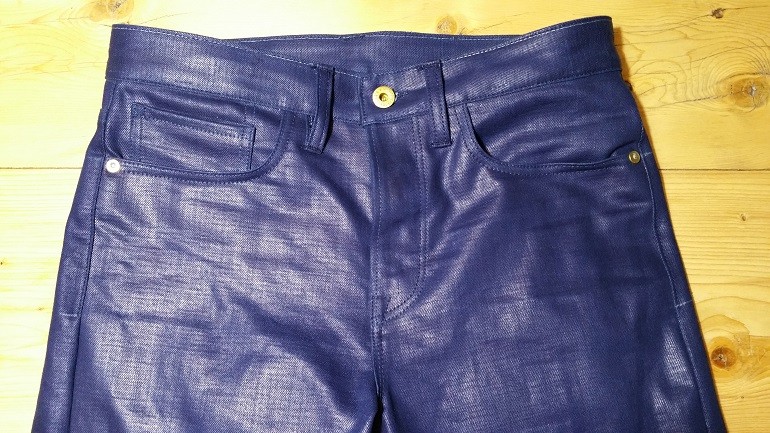
A fresh sample of Ajrak Technology denim
RD: Most hardcore denim fans swear by Japanese mills like Kaihara and Kuroki. How does Artistic compare to Japanese mills in terms of dyeing and weaving?
HW: Artistic Fabric Mills considers itself to be an innovative denim mill offering quality fabrics. AFM has the privilege of being viewed as a world leader in both innovation and quality control while servicing customers ranging from premium fashion brands to larger retailers.
We explore our heritage where it makes sense and put a lot of effort into product development. Because we have our own yarn spinning capability we own the product the moment we receive the cotton. This gives us the ability to make some interesting things like linen and flax yarns with colored neps or super low twist but it also takes away our excuses.
When something goes wrong it is our own fault and we have to make it right and be doubly sure of the new products we introduce to the market. Our rope dyeing has quite an interesting story as it is a sparkling piece of equipment that came from a now-gone American denim mill.
RD: As someone with considerable experience in the denim industry, where do you see the industry as a whole heading? And what are your impressions of the denim scene relating to artisan selvedge denim brands?
HW: The denim industry is constantly looking for newness. The purist denimhead may not see it that way but upon closer inspection it is true. From reviving old production methods, finding new techniques to authentically reproduce a vintage detail to using novelty neps in a fabric the industry is always on the prowl for something fresh. So much of our industry is tied to the macro economy and consumer behavior as a whole that without innovation, we would fall behind during tough times.
I recently browsed through some old business cards and found almost 100 premium denim start ups that have disappeared in just a few short years. A walk through the last few market shows like Capsule or Liberty Fairs makes it clear that the current emphasis is quality and artisanship.
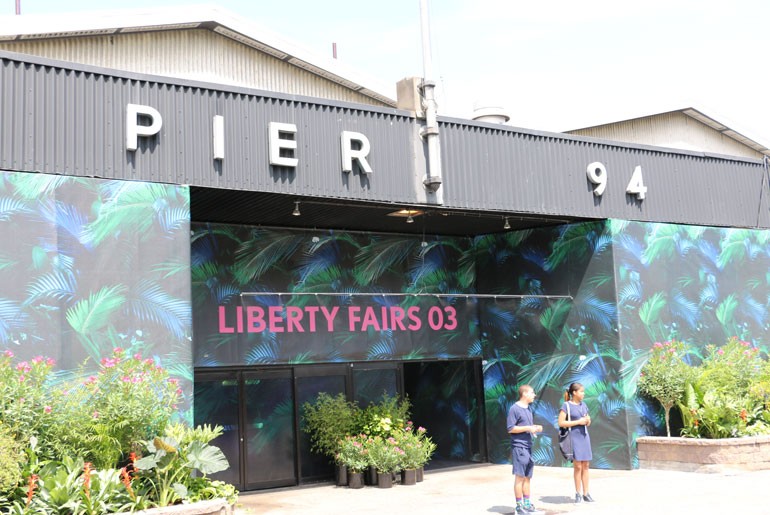
This is great news for people like me who love this approach in all things from food to furniture. The greatest challenge to sustaining this ethos is for small makers to actually live up to this message. It is often not true that smaller is better; especially in America. We need to get the message out to all creators that an entire industry is riding on their shoulders.
Some of my favorite jeans are made by independent creators. At the same time some of the most poorly made jeans on the market are also by small artisan brands using expensive selvage denim. If we wait for the consumer to do the filtering we may not get a second chance.
RD: Many denim enthusiasts see sanforized fabrics like you’d find on a pair of APC jeans to be a starting point, before exploring unsanforized fabrics. Do you think that there will be more small-scale brands exploring unusual or specialist fabrics, such as hank-dyed, slubby, or slack weave varieties orr will these remain an exclusively Japanese phenomenon?
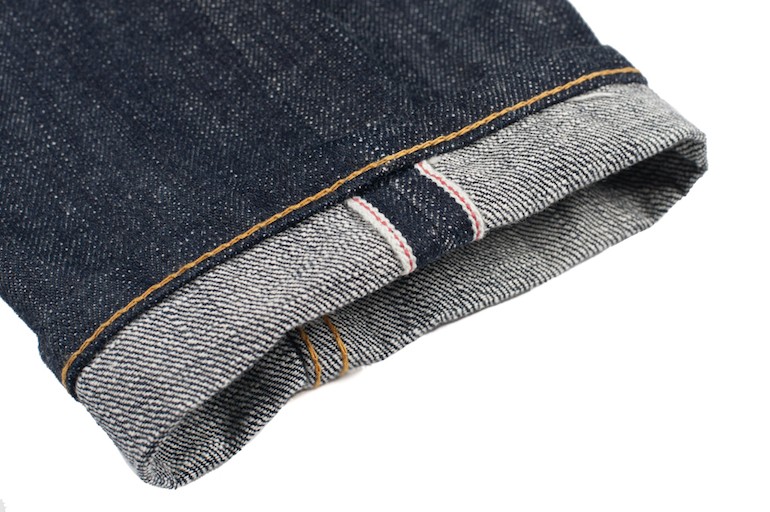
Some slubby Japanese jeans.
HW: I think that the market drives brands to find novelty. Lately there has been an increase in indigo garment dyeing especially in small-batch production. This is partly due to increased interest in home or studio dyeing and partly due to how relatively accessible it is to get started. Down the road we will likely see more hand weaving and small shuttle loom weaving in the US. Most small-scale brands do not make their own fabrics so they reply heavily on suppliers.
Denim mills all over the world never sit still. AFM develops hundreds of concepts every year. For example, our Mid-Century Finish was created to make denim that more accurately reflects fabrics finished on 50’s era mill equipment.
RD: Thanks for taking the time to talk to us, Henry! We look forwarding to seeing more from Artistic Mills in the near future.
Learn more about Artistic Fabric Mills on their website and stay tuned for more updates on Ajrak Technology denim.

